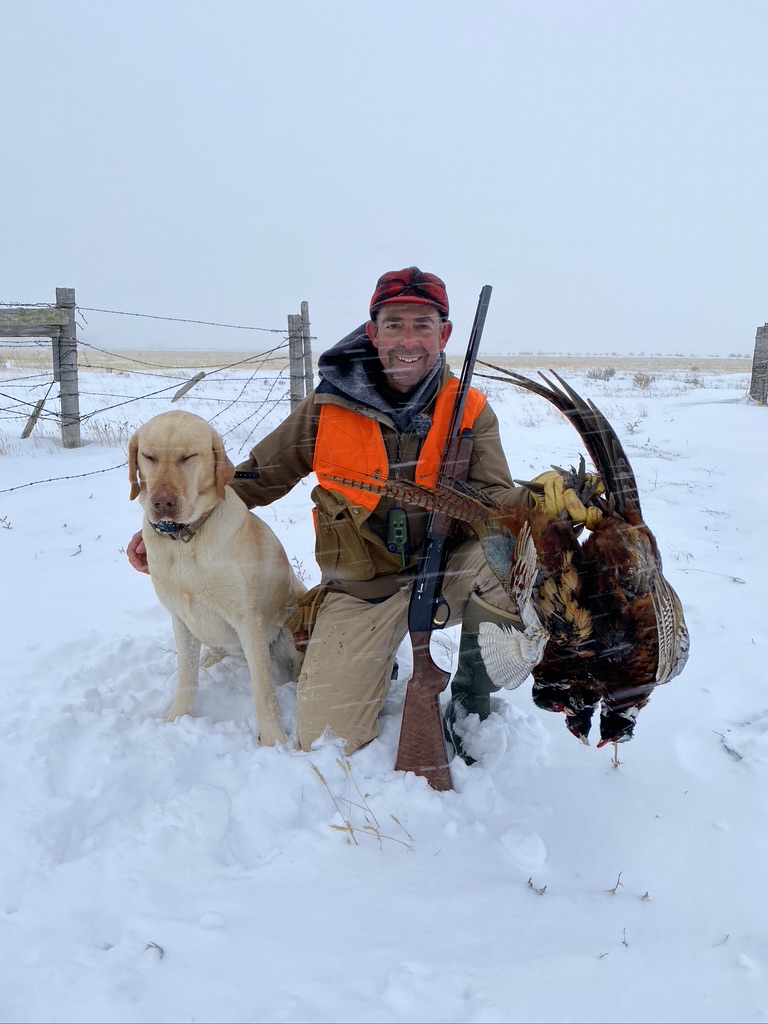Is Hunting With Dogs Fair Chase?
When We Demote Our Dogs to Simple Tools, We Risk Our Social Contract Not Only With the Wild Animals We Hunt But Also Judgmental Non-Hunters
Story & Photos By Andrew McKean
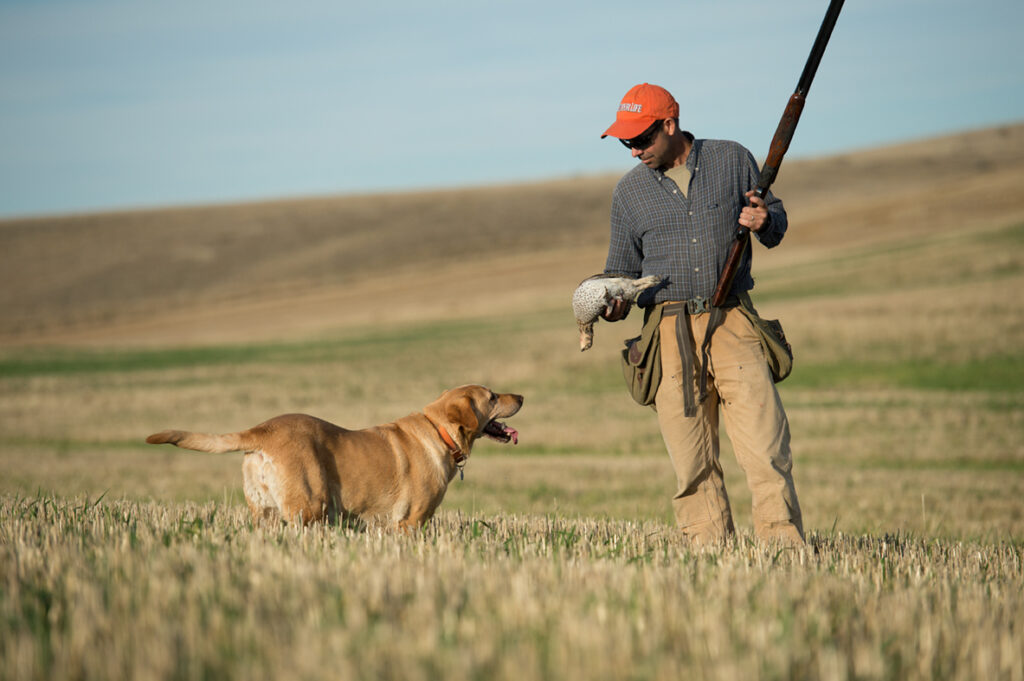
Although he held both an e-collar controller and a shotgun in his hands, the wirehair scarcely acknowledged Percy. The dog’s style and sheer athleticism were noteworthy, but so was his singular obsession with finding and trying to catch birds.
Percy and I walked along behind, watching his distant dog bump a covey of sharptail and then sprint out of sight, following the birds’ fixed-wing flight over a prairie ridge. “I hope I’ll see him again,” sighed Percy, “but it probably won’t make much difference to him. He hunts only for himself.”
That was a decade ago, but some shred of that experience flashes every time I cinch an e-collar on my close-working Lab. I acknowledge that Nellie’s instincts can sometimes trump her manners, but I’ve convinced myself that she hunts mainly for me, and that the e-collar is there simply to remind her of her priorities. But I have to ask … is it half the time? Or is she giving me, her human companion, only 15 percent of her capacity, the remainder devoted to obeying some wild canid instinct. Or, but for me and my gun, would she abandon hunting altogether and submit fully to domesticity, to her soft bed and reliable food?
The percentage matters to me, because our use of domestic dogs to find and recover wild birds raises some problematic issues of obedience but also fairness, not only to the dog but to the birds that have to evade coyotes, foxes, bobcats, and other truly wild predators that don’t have kennels and names. If we are simply deploying another canine predator—our dogs—to chase and kill wild birds for a few weeks in the fall, then we’re not only being cruel, but we’re also kind of being jerks. Give those roosters and drakes a break, already.
But the rewards and satisfactions I receive when I hunt with Nellie are greater than, and separate from, whether I kill a bird or not. My relationship with my dog is the thing, and actually putting a bird in the bag is a culmination of years of training, trust, bonding, and interspecies cooperation. This is the spiritual side of hunting with a dog, and the force that elevates bird hunting to a plane above merely going for a walk with my dog or hunting without a dog.
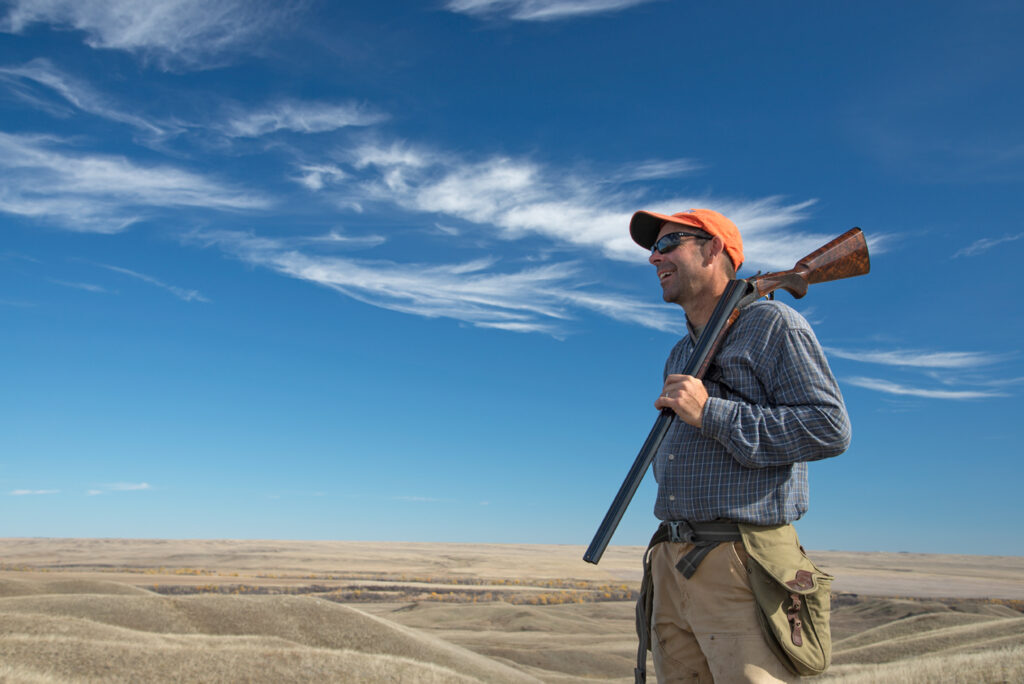
Hunting Dogs As Tools
In a more transactional way, when Nellie is in the zone and especially responsive not only to the birds but to my instruction, she feels to me like an efficient tool, the same way my shotgun and digital mapping app are tools. Each makes me a more effective hunter, the proof of this capability the number of birds in my vest. But there’s a price for this success. The more we hunters rely on tools, on robotic dogs or increasingly sophisticated technology, the more removed we are from the flesh-and-blood reality of hunting.
If you’re still following these squishy thoughts, then you probably know where I’m headed: Does hunting with dogs somehow violate the tenets of fair chase? If you’re not familiar with the term, “fair chase” is the unspoken and unwritten contract that we make with the wild animals we chase. They promise to be evasive and spooky and excessively hard to hunt. We promise to use our instincts as hunters to obtain them, and to restrain ourselves by not using every lethal tool at our disposal to kill them.
This is what makes hunting sporting. It’s what gives pursuit its mystery, the open question of whether a game bird (or deer, or rabbit) will get away or whether a hunter will bring it to hand. Importantly, adherence to the tenants of fair chase appeals to non-hunters who have the power, via the ballot, to determine our ability to continue to hunt these wild animals that are owned by no one, and simultaneously, by everyone and therefore governed by the public.
Fair chase is a luxury item, designed around a fairly modern idea that we can afford to let some wildlife escape. If we really had to kill all the birds, or to guarantee a limit, then you can bet modern humans would find ways to do it. We could head-shoot roosting geese with a rimfire rifle. Or we could set fire to grasslands to flush all the grouse. Or we could build fences around deer so they couldn’t escape. Or we could cast Percy’s wirehair and wait for him in the pickup, hoping he hadn’t eaten all the birds.
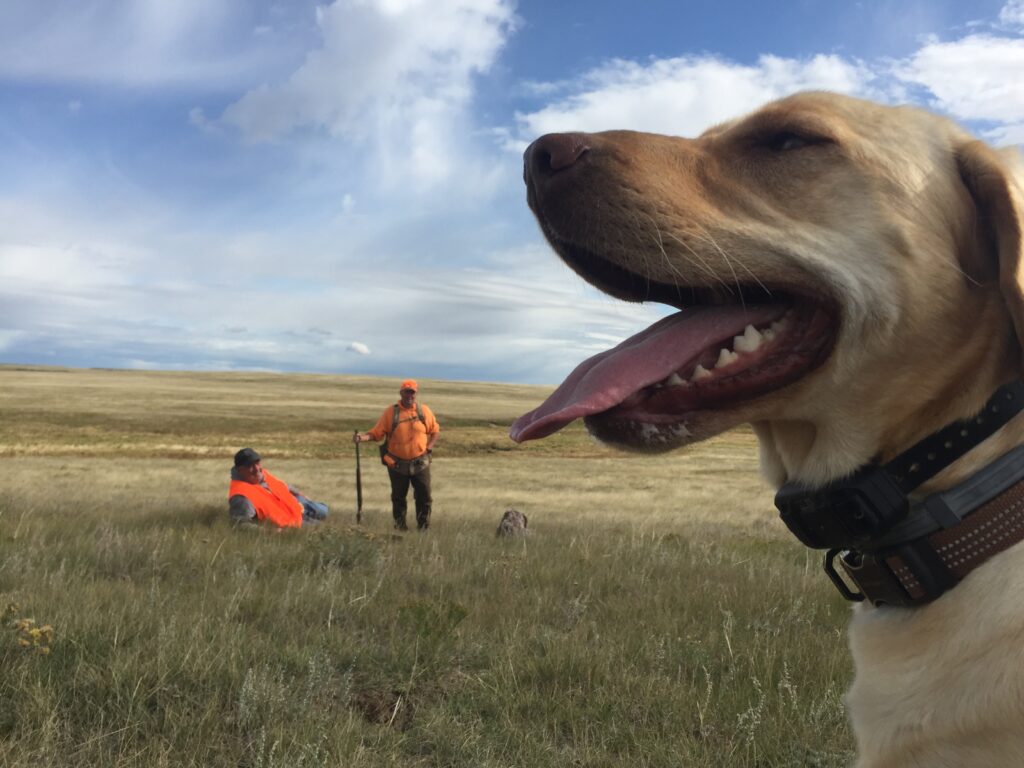
The Value of Restraint
But we don’t do any of those things, because a particular quality of hunting is not the shooting. It’s the chase, and in the company of a trusted dog, the chase is elevated from the practical to the spiritual. ut it’s not absolute, which is why it matters that your dog benefits from your company as much as you benefit from your dog’s.
The friction between technology and our ancient use of dogs as hunting tools is hottest at the intersection of predator hunting and satellite-informed transponders. I’m thinking of hound-hunting mountain lions and bears, a traditional activity in many parts of the country. In the pre-digital tradition, handlers would release their hounds on a fresh track and then follow their melodic baying to a treed lion or bear or coon, no matter how long it took. Sometimes handlers lost auditory and visual contact with their hounds, but normally it was a tall-trees analog of a bird hunter and a pointer; in each case the dog and hunter worked together.
But GPS collars and mobile apps allow lion hunters—and bear hunters, and racoon hunters—to cast into much larger landscapes, and they don’t require handlers to be in direct contact with their dogs. A handler can release their dogs on fresh tracks before sunup, but then go back to town for coffee until their GPS receiver indicates the dogs have treed. The handler hikes to the waypoint and, at least sometimes, there’s a treed or bayed-up bear or lion to assess and either harvest or not.
It’s a little like Percy’s wirehair hunting for himself. I’m not familiar enough with the particulars of hound hunting to pass judgement, and even if I was, any hunter should wade into comparative criticism cautiously—to a non-hunter, everything we do is barbaric. Besides, it’s a short hop from criticizing a lion-hunter’s GPS collar to a setter owner who follows his GPS to a staunch point. The only real difference is time and distance; the other details are identical.
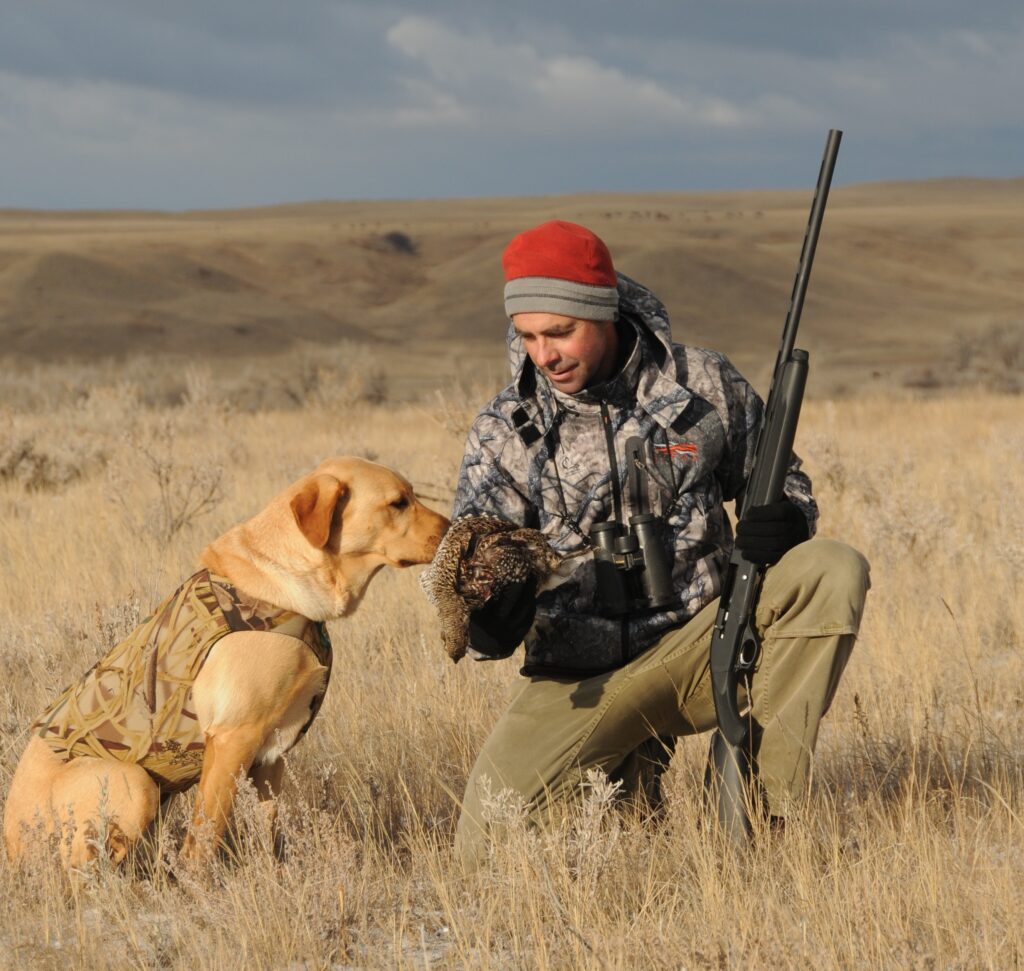
My point is that over-reliance on technology is hard to justify to the majority of non-hunters who vote on legislation and ballot initiatives that shape our ability to perpetuate traditional activities like hunting. Anti-hunters have used lion hunters’ distance from their hounds, along with our reliance on ATVs, cell phones, and modern rifles, to claim that all hunting, but especially lion hunting with hounds, is unethical
I strongly disagree, but the fact that the perception exists and can be weaponized against legal, traditional hunting should get the attention of every hunter who relies on their dog and an e-collar.
The Power of Shared Experiences
If I carry a gun through the house in April, Nellie scarcely stirs. But if I so much as look at a gun in September, she’s on her feet, whining to go outside and jump in my pickup, already stretching her legs in expectation of a strenuous field session. That’s proof to me that we’re in it together, Nellie and me. But the use of avidity as an indicator of commitment to this common purpose works both ways. When our dog no longer takes pleasure in the expectation of a day afield, or when we can’t rise to the level of enthusiasm of our dog, then maybe that’s a sign that we should wind down our shared passion. Maybe it’s also the sign that, as we deputize our dogs in our hunting pursuits, we are meeting somewhere in the middle. We should strive for an equilibrium where our dogs need us just as much as we need them.
Nellie would have no real ability to access her favorite place on Earth, a side channel in the Missouri River below eastern Montana’s Fort Peck Dam, without my pickup or my encouragement to cross the ice-slushed main channel together, in the dark, with only my headlamp beam and my voice for guidance. She couldn’t fulfill her hereditary mission to retrieve heavy-water geese unless I guided her to them, and then connected with my shotgun.
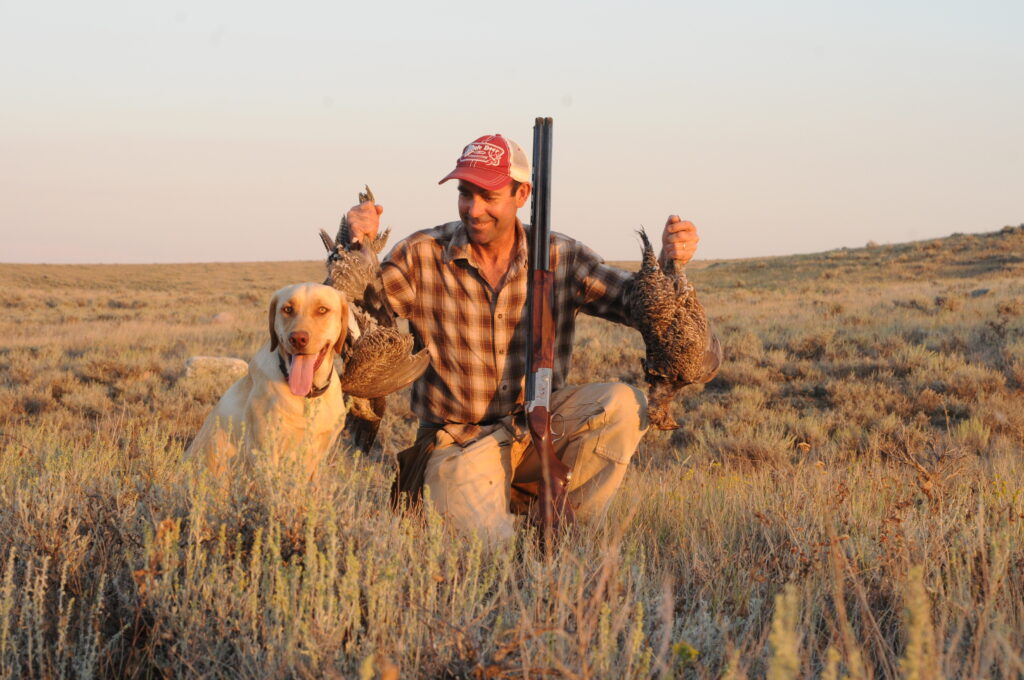
This is the gift of gun dogs, not only as capable tools, but as living proof of the connection between species, evidence that humans make animals’ lives better and more fulfilled. That the same can be said of dogs’ effect on humans is the most powerful answer to the question I posed in the headline.
In fact, I think our relationship with dogs amplifies
In fact, I think our relationship with dogs amplifies the definition of fair chase. A better question is: Do hunters give their dogs more satisfaction and fulfillment? Or do dogs give more of the same to their humans?
As long as we keep asking ourselves that question, we’ll adhere to the spirit of fair chase as dogs as extensions of us. If you’re in doubt, then apply this simple test: Throw away your e-collar. Get rid of your phone. Take your dog afield with just a shotgun and your trust in their connection to you. Use a whistle or your voice. Steer them to the best cover. Cheer their points, trees, and their retrieves. Make them know that you are responsible for their best life.
And then celebrate every animal that they put in your hand and your vest. The best evidence that hunting with dogs is a fulfillment of fair chase is the workaday effort your dog puts into bringing you what you have bagged together. But the opposite, exhibited far too often by Nellie, is equally clear: the utter disdain your dog throws you when you miss a bird they’ve worked so hard to put on the wing.
